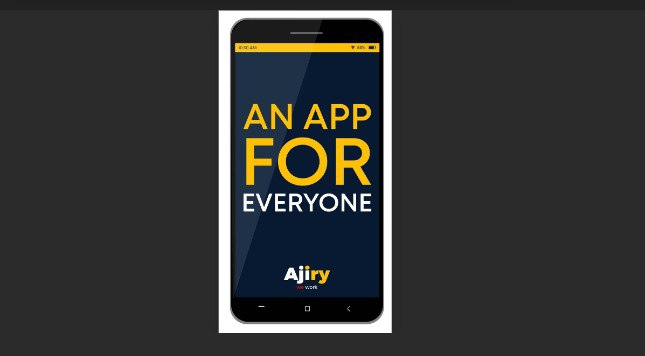[ad_1]
For a long while, pretty much most of Android Auto’s existence, it was limited to just the navigation apps offered by Google. Starting last year, that is slowly changing with Google allowing third-party navigation applications to be available through the Play Store and, subsequently, to be mirrored on car’s infotainment system displays when Android Auto is in action.
That means that, in the coming days, we will see the number of navigation rise and give Google Maps the much-needed competition.
For now, though, these are the solutions you have to make your commute a little more bearable.
Google Maps
When talking about Android Auto, it comes naturally that, sooner rather than later, your attention has to shift to Google Maps. Heck, unlike on smartphones and smartwatches where we have home screens and app drawers where we shift to, Google Maps, on Android Auto, appears to be your welcome screen. It’s launched and ready the moment your phone connects to your car’s head unit.
That is how important Google Maps is to Android Auto.

For many an Android Auto user, Google Maps is probably the only navigation app they need. It offers up-to-date traffic information – congestions, road works, etc. It offers accurate turn-by-turn navigation and is very good with measuring distances and providing time-based estimates for those that need to share their travel itineraries with other people or for one’s own planning.
The traffic information is provided by default for one’s route. However, enabling live traffic info in the app’s settings when connected results in the traffic status of any road that is in view being shown which is great for you making your own judgements instead of being limited to the alternative route that Maps almost always has on standby (see above photo).
Something can be said about Google’s Maps secret sauce i.e. how it gets to decide which routes to suggest and what usually takes precedence, the fastest way to get to one’s destination or the most fuel-efficient route to get them there… However, you quickly learn to trust its judgement and live with the decisions the system makes on your behalf. Well, until it decides to lead you to a road inside the President’s official residence! Or leads you to a section of the road blocked by one of Nairobi’s many ongoing road construction projects.
Is there anything sweeter in your car than plugging in your phone and commanding the Assistant to take you home after a long day at work?
And did I mention that Maps just integrates with your car systems for an automatic night mode any time your lights are on so that it’s just the driver on the opposing lane anakuchoma macho?
Ok, can Google also let us do this on Android Auto?
Waze
Being a Google app, Waze has enjoyed an advantage that many navigation apps haven’t enjoyed – being in included in Android Auto from the get-go.
It varies from its sister app as far as looks go. It is not as aesthetically pleasing and the announcers on it don’t sound as excited as the ones on Maps, or even aggressive. This is all subjective and is neither here nor there.

Functionality-wise, what one would miss on it, which is surprising, is always-on traffic information. It will still pop in to let you know of any accidents on the road but, in my short time using it (I prefer Maps, why lie?), I have found that to be pretty much it.
The one thing I love on Waze? The speedometer. You can turn this on or off but I always have it on. It’s nice to have. Yes, sure, I could use whatever the car has – which I do – but it is just fun having it there. I wish Google Maps allowed me to do the same.
Also, Waze is great with things like eateries near you, parking lots and petrol stations. Where you’d have to search for these on Maps, Waze has a handy menu on the right side of your infotainment system’s display that you can easily access.
Sygic
Sygic is one of the most recent additions to the Android navigation apps portfolio.
It differentiates itself from the above apps by entirely setting its eyes on keeping you moving even when offline.
Sygic is known for its offline maps.
Download the app from the Play Store (see link below), launch it on your phone (even before connecting to your car) and let it download the local map (it will automatically identify that you are in Kenya and suggest that). After that, connect to your car’s system and get moving. Easy.
If Waze is bland – with all the grey stuff going on – then Sygic is even on the extreme side.

Besides the obvious leg up it gets by letting users download maps for offline use, it has a couple of add-ons to enhance its functionality. As you find out quick enough, though, most of them are at a cost (there’s a free trial). And, they are not cheap. So, then, the question becomes, why would you pay for features that you can get elsewhere (on Google Maps) for free? I have no conclusive answer.
The half-assed answer I can come up with is that some of the add-on features are ones that are probably worth paying for. For instance, there is a dashcam feature that takes advantage of your phone’s cameras to record everything on the road in case you don’t have a dashcam already.
Here is the interesting bit. As you may have noticed, having your phone in such a way that it can record everything on the road either via the front-facing camera or the back camera(s) means that it is likely to not be plugged in to your car’s head unit and, thus, unlikely to be running the Android Auto app at the time. This is true of how those Sygic add-ons work. You’ll need to have your phone mounted on your car’s dashboard in order to do that. Now, taking us away from the convenience of Android Auto isn’t why we have it but if you’re trying to rationalize your purchase, this is it. I don’t have wireless Android Auto so I don’t know how this goes in such an instance.
TomTom AmiGO
TomTom has been in the location technology industry for as long as some of us have been alive. Yes, it is that old. It is a market leader with its navigation systems being found in cars and trucks around the world. It might not be common in Kenya, where our long-distance trucks opt for Garmin systems, most of the time, but it is elsewhere in the world.
TomTom AmiGO is the legendary company’s offering for our cars and it is the latest navigation application to make its way to Android Auto. Sadly, as of the time of writing this, TomTom AmiGO is not yet available in Kenya. When it does become available, it will be a solid competitor to Google Maps and, hopefully, then, we will do a proper rundown of what it offers a driver.
[ad_2]
Source link




















